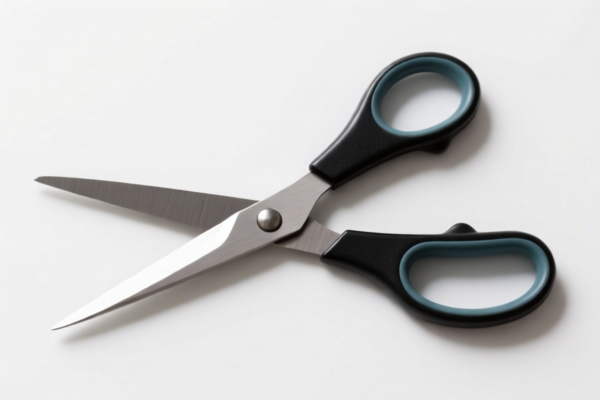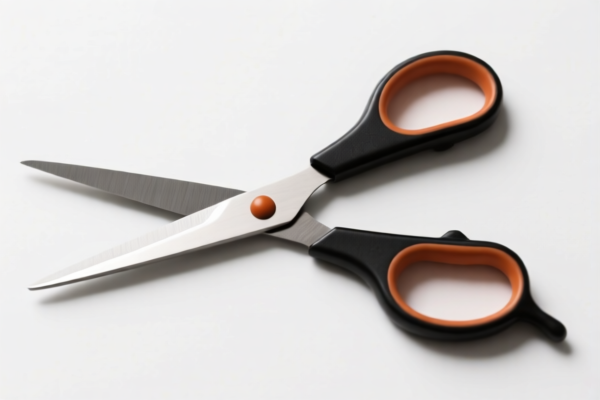| HS Code | Official Doc | Tariff Rate | Origin | Destination | Effective Date |
|---|---|---|---|---|---|
| 8213003000 | Doc | 1.7¢ each + 4.3%+30.0% | CN | US | 2025-05-12 |
| 8213009000 | Doc | 3¢ each + 3%+30.0% | CN | US | 2025-05-12 |
| 8215992000 | Doc | 0.5¢ each + 3.2%+30.0% | CN | US | 2025-05-12 |
| 8215995000 | Doc | 35.3% | CN | US | 2025-05-12 |
| 3926901000 | Doc | 40.9% | CN | US | 2025-05-12 |
| 3926909989 | Doc | 42.8% | CN | US | 2025-05-12 |
| 3924104000 | Doc | 33.4% | CN | US | 2025-05-12 |
| 3924905650 | Doc | 40.9% | CN | US | 2025-05-12 |
| 9602005080 | Doc | 40.2% | CN | US | 2025-05-12 |
| 3503005550 | Doc | 2.8¢/kg + 3.8%+37.5% | CN | US | 2025-05-12 |
| 3503005550 | Doc | 2.8¢/kg + 3.8%+37.5% | CN | US | 2025-05-12 |




Plastic Scissors
Plastic scissors are cutting implements constructed primarily from plastic materials. They represent a lightweight and often inexpensive alternative to traditional metal scissors, serving a variety of purposes where precision cutting is not paramount.
Material
The blades are typically molded from polymers like polypropylene (PP), polyethylene (PE), or acrylonitrile butadiene styrene (ABS). The handles are often constructed from the same or similar plastics, though some designs incorporate metal reinforcements for added durability. The plastic used is generally selected for its flexibility, ease of molding, and low cost.
Purpose
Plastic scissors are generally intended for tasks involving softer materials, or where the risk of damage from metal blades is a concern. Common applications include:
- Arts and Crafts: Cutting paper, cardstock, felt, yarn, and ribbon.
- Children's Use: Designed for safety, allowing children to practice cutting skills with reduced risk of injury.
- Packaging: Opening plastic packaging or light cardboard boxes.
- Household Tasks: Simple cutting tasks around the home, avoiding damage to surfaces.
Function
The cutting action relies on the shearing principle. Two blades, angled against each other, pass closely by one another when the handles are closed. This creates a force that separates the material being cut. The effectiveness of this action is dependent on the sharpness of the blades (which degrades with use) and the material's resistance to shearing.
Usage Scenarios
- School classrooms: Providing safe cutting tools for students.
- Homes with young children: Allowing supervised cutting practice.
- Offices: Quick cutting of paper or tape.
- Travel: Lightweight and disposable cutting solution.
- First-aid kits: Cutting bandages or tape.
Common Types
- Safety Scissors: Rounded blade tips and often feature blunt edges for increased safety. Designed for children.
- Spring-Loaded Scissors: Feature a spring mechanism that automatically opens the handles after each cut, requiring less manual effort.
- Small Craft Scissors: Compact size and designed for intricate cutting tasks in arts and crafts.
- Packaging Scissors: Often designed with a specific shape to facilitate opening plastic blister packs or boxes.
- Disposable Scissors: Single-use scissors, often found in medical or food service settings.
Plastic scissors fall under articles of plastics and articles of other materials, typically used for cutting various materials in household, commercial, or industrial settings.
Here are the relevant HS codes based on the provided reference material:
-
3926901000: Other articles of plastics and articles of other materials of headings 3901 to 3914: Other: Buckets and pails. While primarily for buckets and pails, this code covers "other articles of plastics," which could encompass scissors depending on their specific design and use.
- 39: Chapter 39 covers plastics and articles thereof.
- 26: Heading 3926 specifically addresses other articles of plastics.
- 901000: Subheading 3926901000 further defines the category as "buckets and pails," but the broader "other articles" aspect is relevant.
-
3926909989: Other articles of plastics and articles of other materials of headings 3901 to 3914: Other: Other Other. This is a more general category for plastic articles not specifically classified elsewhere.
- 39: Chapter 39 covers plastics and articles thereof.
- 26: Heading 3926 specifically addresses other articles of plastics.
- 909989: Subheading 3926909989 represents a catch-all for "other other" plastic articles.
-
3924104000: Tableware, kitchenware, other household articles and hygienic or toilet articles, of plastics: Tableware and kitchenware: Other. If the plastic scissors are designed for kitchen use (e.g., poultry scissors, herb scissors), this code may be applicable.
- 39: Chapter 39 covers plastics and articles thereof.
- 24: Heading 3924 specifically addresses tableware, kitchenware, and household articles of plastics.
- 104000: Subheading 3924104000 further defines the category as "tableware and kitchenware: other."
-
3924905650: Tableware, kitchenware, other household articles and hygienic or toilet articles, of plastics: Other: Other. This is a broader category for plastic household articles not specifically classified elsewhere.
- 39: Chapter 39 covers plastics and articles thereof.
- 24: Heading 3924 specifically addresses tableware, kitchenware, and household articles of plastics.
- 905650: Subheading 3924905650 represents a catch-all for "other other" plastic articles.
According to the provided reference material, the HS code options related to 'plastic scissors' are limited, with only the following 4 found.
Important Note: For HS codes 3926901000 and 3926909989, the applicable tariff rates are 3.4% basic tariff + 7.5% additional tariff, with a total tariff rate of 40.9% after April 2, 2025. For HS codes 3924104000 and 3924905650, the applicable tariff rates are 3.4% basic tariff + 7.5% additional tariff, with a total tariff rate of 40.9% after April 2, 2025.
Customer Reviews
No reviews yet.